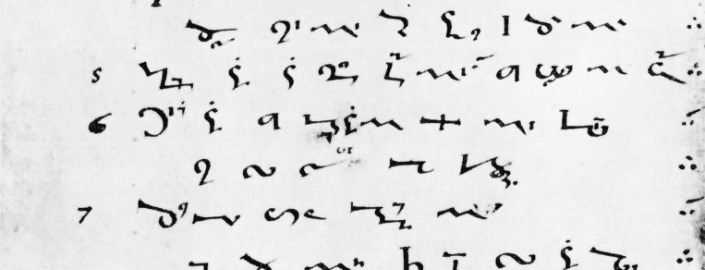Tironian notes (notae Tironianae) were a Roman system of rapid writing, which appeared in the last years of the Roman Republic. It assumed usage of shorthand.
According to Plutarch, they were developed by Marcus Tullius Tiro, secretary of the Marcus Tullius Cicero (106-43 BCE). To be able to faithfully record the speech of his principal, Tiro invented a kind of contemporary shorthand. The special abbreviations used by Tiro were called notae Tironianae. There is also a version that assigns the invention of the rapid typing system – and thus also the abbreviations – to the poet Ennius.
Tironian system gained great popularity, it was used by writers who were recording the speeches of officials at folk meetings and in the senate, speeches in which legal issues were raised and which often became the basis for new rights themselves. These writers, due to their use of notae Tironianae, were called notary public. At the end of the previous era, there were already around five thousand such notes – the task of their writing down were undertaken by Seneca the Elder (55 BCE – about 40 CE).
Notae were heavily processed and extremely simplified letters or fragments of letters, of which one characteristic element often remained. The inflectional endings were determined by a set of dots and commas with a position-dependent relation to the neighboring letter. Only a few characters originating from Tironian notes entered the medieval brachygrafic systems. On the other hand, those gave birth to the medieval shortening system through special characters.







